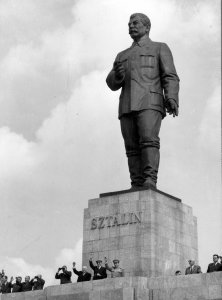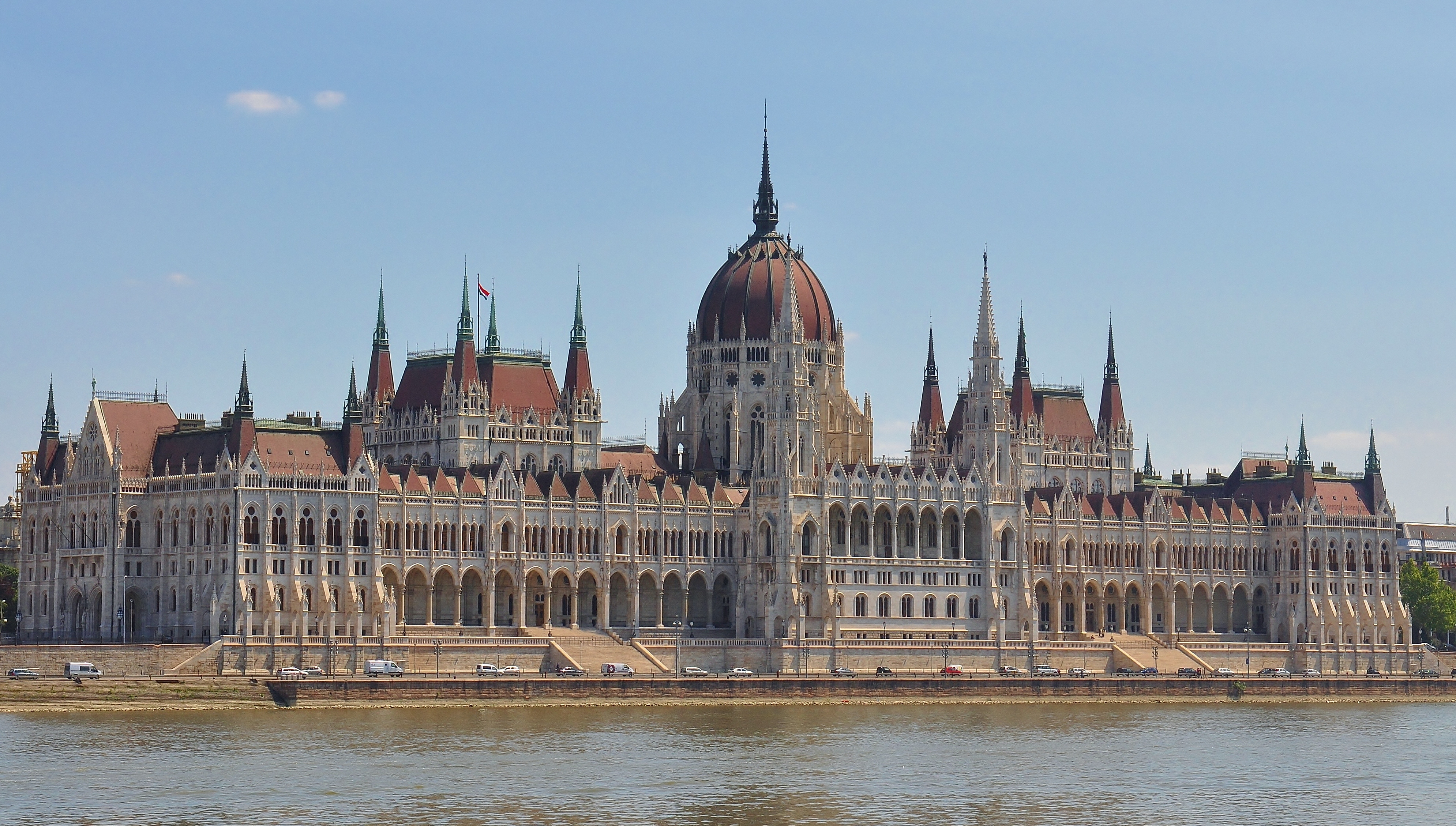We began our city tour of Budapest in the daylight by hiking up the steep hill behind our hotel to see where the patrician, silk-stocking bourgeoisie lived both in the past and today.
At the pinnacle of Buda Hill is the Hapsburg Palace which reminded me of a marble Disneyland castle.
However, its location and solid construction were not chosen for their entertainment value. Rather, the fortress was designed to protect the Buda village from Mongols.
It is easy to see why the castle and fortifications were built on this side of the Danube. The Buda Hills provide an excellent defensive position for Central Europe’s main waterway.

Defense has been necessary to the population for almost as long as the nation has existed.
Celts from the north and the Magyars from the east founded Hungary in 1000 with King Stephen as their first king. At the time, Buda and Pest were only tiny villages.
In 1241, the Mongols invaded and destroying Pest and Buda. They burnt the crops and decimated the Hungarian population. Half of the population, about 1 million people, were killed or deported as slaves. Famine and hunger followed. The leader of the Mongols died suddenly, and the invaders returned to Asia.
The departure of the Mongols allowed the next king, Bella, to rebuild the country. Understandably, he built a fortress on Buda Hills to defend against future attacks. The second Mongolian strike was stopped at Pest by the royal army thanks to these castles. Afterward, to bolster his numbers, the king invited settlers from Western Europe to immigrate as reinforcements.
 |
| When the Turks captured Buda, Matthias Church became a mosque. |
It took 150 years before the Hungarians could reunite under the leadership of the Holy Roman Emperor, liberating Buda and Pest. However, the Turks did not leave without a protracted fight. In the siege the two towns were completely destroyed. The Royal Palace on Castle Hill was in ruins. Only a few thousand people survived the fights inside the walls of Buda.
After the liberation, churches that had been converted into mosques were transformed back into their original functions.
Sadly, the defeat of the Turks did not bring freedom to Hungary. The country became a province of the Habsburg Empire. The Habsburg regime started large-scale reconstruction works in Buda and Pest. Baroque dwelling houses and churches replaced the Ottoman era buildings.
Eventually in the mid 1800s, the Hungarians partially gained their independence from Hapsburg rule and became the Austrian-Hungarian Monarchy with Hungarian as the official language.
During World War I, Hungary allied with Germany and Austria. Near the end of the war, in 1918, the country became the Republic of Hungary. However, in the peace settlement--the Treaty of Trianon--the country was split up and reduced from more than 20 million citizens to a country of less than 8 million.
This sad chapter in Hungary's history is chronicled in the museum in the Jewish Quarter. The Great Synagogue located on the Pest side of the city shares space with the Holocaust museum.

Jewish martyrs are memorialized in The Raoul Wallenberg Memorial Park located in the synagogue's side yard.
An enormous metal weeping willow, The Emanuel Tree, is the centerpiece of the park.
 |
| worldinbetween.files.wordpress.com Inscribed on each leaf are the names of Hungarian Jews killed during the Holocaust. |
Located just behind The Emanuel Tree is of the newest memorials in the park, a stained-glass wall depicting the flames of the Holocaust.

The glass was installed to honor the 100th anniversary of the birth of Raoul Wallenberg, a Swedish diplomat who saved many of the city's Jews from extermination camps by issuing them protective Swedish passports.
After the defeat of the Germans, the Soviets took over Hungary occupying the country for 44 years.


Soviet control lasted until 1989, when Hungary finally became an independent democracy. In 1999, Hungary joined NATO, and in 2004, became a member of the European Union.
Buda still features the Gothic Palace and homes of the upper class,
while the Pest side of the city is dedicated to commerce. This quarter features fancy hotels,
the Hungarian State Opera House,
and St. Stephen's Cathedral named after Hungary's first king.
 |

Hungary should be proud of its resurgence. The magnificent parliament building,

the chain bridge,
 |
| farbspiel-photo.com |
 |
| Hilton-Budapest Castle |




















